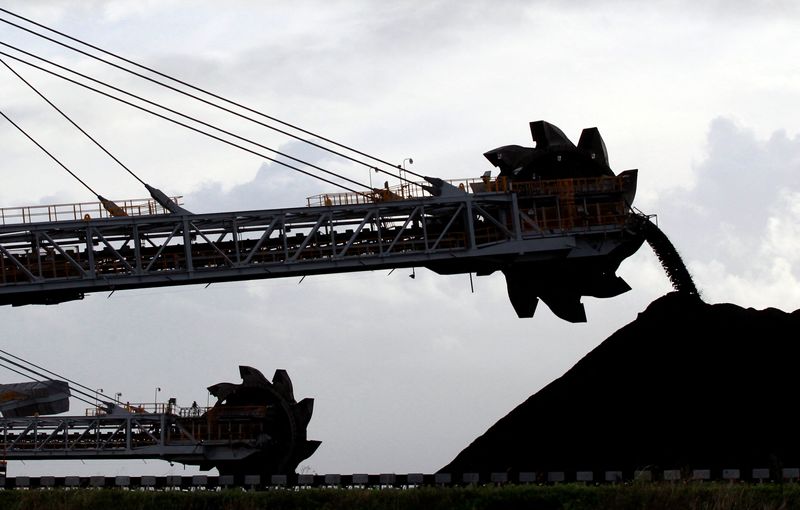New Year with thoughts of recession
2022.12.30 06:32

New Year with thoughts of recession
Budrigannews.com – Coal and markets were balanced on Friday to end 2022 with solid additions after a worldwide energy emergency set off by the Russia-Ukraine war stirred up a sharp rise in costs, while more tight supplies expected in 2023 could fuel more gains.
Rubber, industrial metals, and iron ore are all on track to finish in the red in 2022 due to fears of a global recession and China’s strict zero-COVID policy.
In March, adverse weather and supply disruptions caused by the pandemic caused agricultural markets, including palm oil and grains, to reach all-time highs. This caused food inflation, but those commodities lost most of their gains in the second half.
“Regardless of the new cost declines, products will in any case probably finish the year as the best performing resource class…,” Goldman Sachs (NYSE:) stated in its commodity outlook for 2023.
“The setup for most commodities next year is more bullish from a fundamental perspective than it has been at any point since we first highlighted the supercycle in October 2020.”
This year, Russia cut off supplies to Europe and damaged a major pipeline during the conflict in Ukraine, causing European nations to import record volumes to ensure winter supplies.
The increased demand for liquefied natural gas (LNG) in the face of decreasing supplies of piped gas put a significant strain on the global market and sparked an energy crisis that resulted in record-breaking gas prices.
Newcastle coal fates have taken off practically 140% in 2022, the greatest leap starting around 2008. For the third year in a row, gas futures in the United States and Dutch wholesale gas prices have increased by more than 20%.
Gas prices are anticipated to remain elevated despite the limited new supplies that are coming on-stream because Europe will continue to import LNG to rebuild gas inventories following the winter.
Destroying of tight pandemic controls in China, the world’s second-biggest LNG shipper, could likewise advance financial recuperation and more noteworthy LNG utilization one year from now.
However, beginning in February, a European cap on gas prices could help stabilize the market and lessen this year’s volatility.
Oil costs are on target briefly yearly increase, with up practically 6% and rising almost 5%.
Even though both industrial metals reached record highs in March, three-month prices on the London Metal Exchange have fallen by more than 13% and 15%, respectively, in 2022.
This year, spot prices of iron ore bound for China, which consumes approximately two-thirds of the global supply, decreased by approximately 5% to close to $115 per tonne.
Analysts at Citi are bullish on iron ore and aluminum, but bearish on nickel and zinc for the next six to twelve months due to strong supply growth.
In a note, they stated, “Iron ore is expected to remain strong in the near term and could follow through in the bull case of a major China credit easing…”
In December, prices of ferrous and non-ferrous metals were supported by China’s promise to increase support for the ailing real estate sector and its U-turn on COVID policy.
However, the country’s rising COVID infection rate and the rising likelihood of a global recession in 2023 if central banks continue to raise interest rates to control inflation have dampened optimism.
Nickel, the major metals outperformer, is on track for a 45 percent increase, its largest since 2010, partly as a result of a lack of metal that can be delivered against the LME contract and partly as a result of the volatile market following a trading hiccup in March, when volumes decreased.
In March, benchmark Chicago wheat futures reached an all-time high of $13.63-1/2 a bushel due to the invasion’s reduction of grain supply from Ukraine, a key grain exporter, to a global market already experiencing price increases due to adverse weather and COVID-19 restrictions.
Corn and soybean prices reached all-time highs, while benchmark crude palm oil prices in Malaysia reached all-time highs.
Wheat production is unlikely to replenish depleted global inventories until at least the first half of 2023, and crops that produce edible oils are suffering from adverse weather in Latin America and Southeast Asia. As a result, food commodity prices are likely to be supported in the future.
A Singapore-based trader at an international trading company stated, “U.S. winter wheat is facing harsh cold weather and, even if the crop improves, we will have those supplies (only) in the second half of 2023.”
The rice market, which passed on the convention in grain costs in the main portion of the year, got a lift after India, the world’s greatest exporter, chose in September to control supplies. In 2022, the percentage of broken parboiled rice sold in India will increase by almost 6 percent, while the percentage of broken rice sold in Vietnam will increase by more than 15 percent.
In the precious metals market, palladium is down 4%, platinum is up 9%, and silver is up almost 3% in 2022. Gold is down for a second year.
Espresso is among the greatest failures, with robusta down 23% and arabica losing a fourth of its worth.
Raw sugar has increased by more than 7% while Tokyo rubber has lost more than 7%. (NYSE:) ICE In 2022, cotton has decreased by more than 26%.
More China is main supplier of energy products from Russia-Putin








